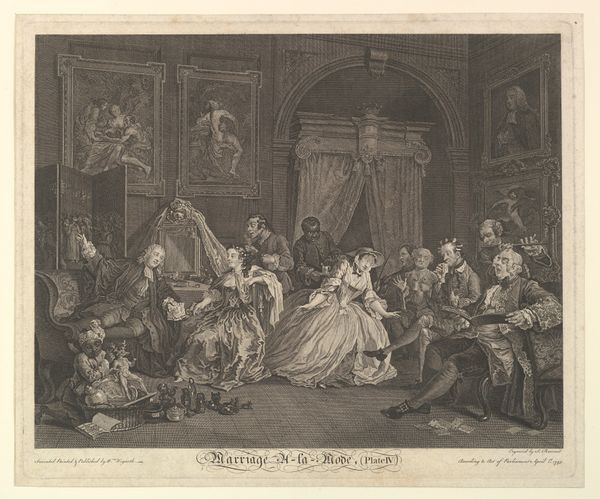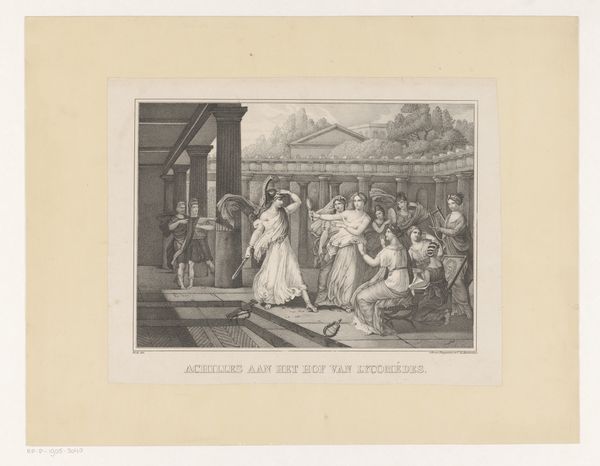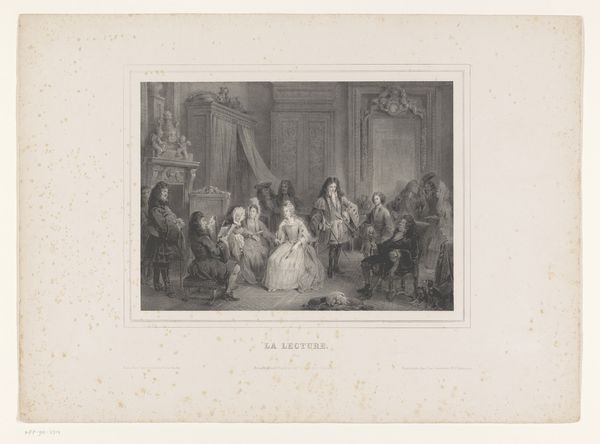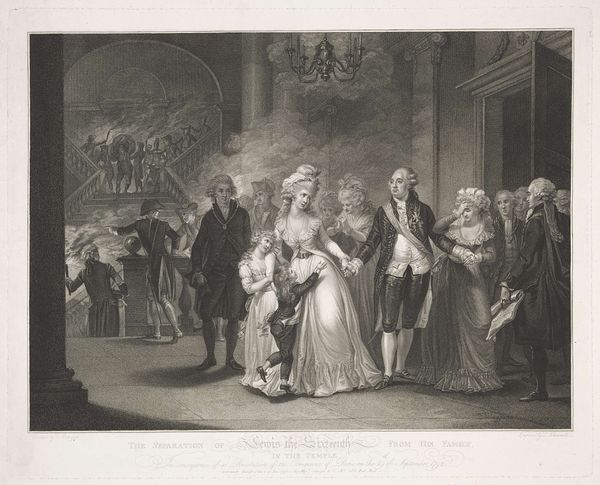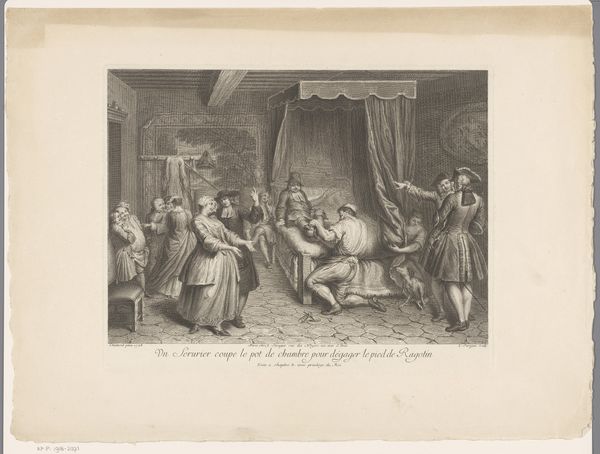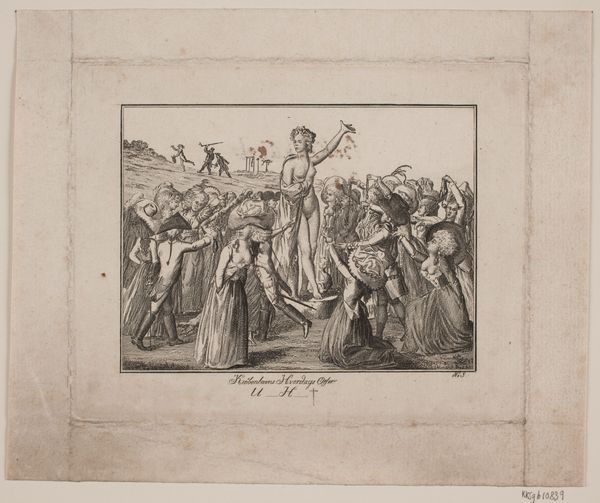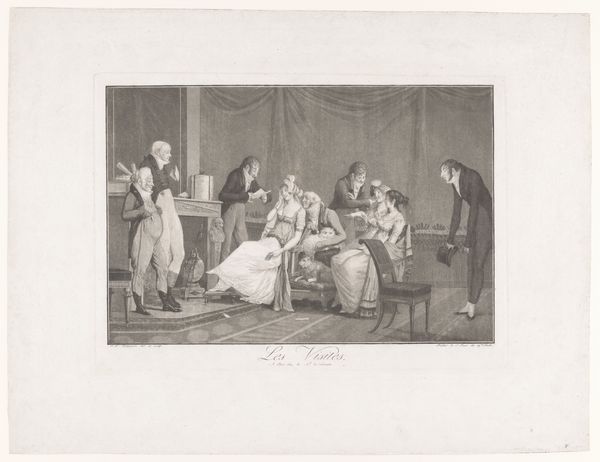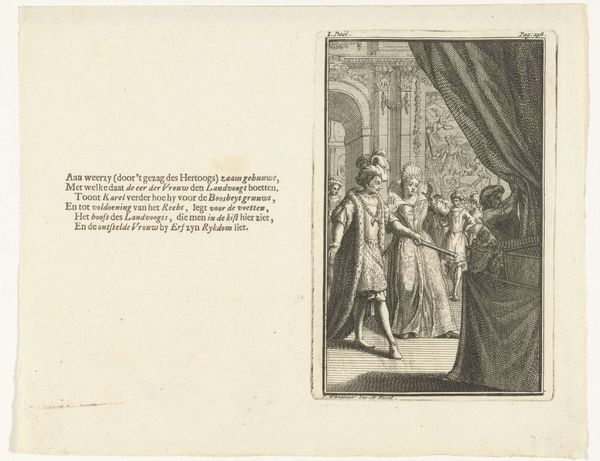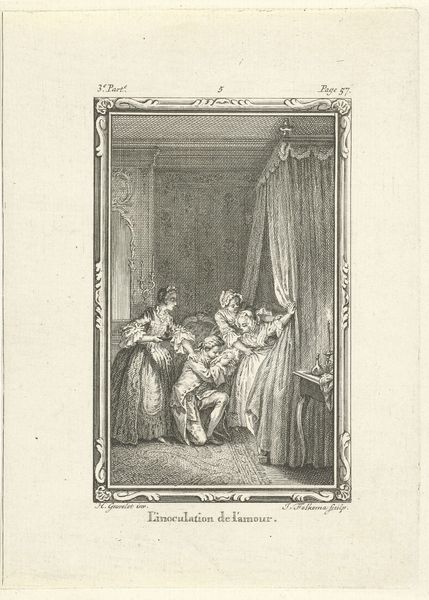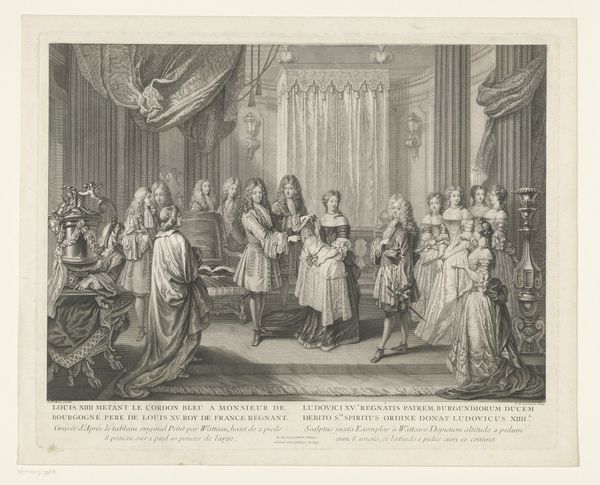
Mary, Queen of Scots kneeling on the scaffold 1790
0:00
0:00
drawing, print, engraving
#
portrait
#
drawing
#
narrative-art
# print
#
figuration
#
romanticism
#
men
#
history-painting
#
engraving
Dimensions: Plate: 8 1/16 × 9 3/4 in. (20.5 × 24.8 cm) Sheet: 9 7/16 × 11 1/8 in. (23.9 × 28.3 cm)
Copyright: Public Domain
Curator: William Nelson Gardiner’s 1790 engraving, "Mary, Queen of Scots Kneeling on the Scaffold," depicts a chilling moment in history. Editor: The stark contrast in this engraving immediately grabs you. It's emotionally heavy, the dark lines etching out such a stark scene. You can almost feel the cold air and the weight of the impending execution. Curator: Gardiner’s choice of engraving is particularly interesting. Prints like these democratized access to historical narratives. This image, multiplied and distributed, helped shape public perception of Mary as a tragic, romantic figure. The choice of paper, its potential for mass production… all feeds into the story. Editor: Absolutely. And the visual symbols! Mary, the central figure, kneeling, hand outstretched – a classic pose of supplication and martyrdom. The scaffold becomes an altar, and she, a sacrifice. It powerfully evokes the drama of betrayal, power, and fate. Curator: But let’s not overlook the artistry, the labor involved. Consider the engraver's skill: each line meticulously placed, translating complex emotions into reproducible marks. The print medium allowed for wide dissemination, fostering discussions across social strata, from parlors to public houses, using an aesthetic formerly confined to elite oil paintings. Editor: Looking at the supporting figures, I can’t help but wonder about the expressions on their faces. Some seem mournful, others perhaps stoic, hinting at divided loyalties. They’re like archetypes, embodiments of conflicting emotions surrounding this event, a window into 18th-century interpretations of this historical tragedy. Curator: True, though I'm more drawn to thinking about the distribution networks: how these images traveled, who bought them, and how the act of viewing was tied to discussions around nationhood and perhaps gender, too. A material object embedded in a network of social exchanges. Editor: It truly makes one pause and reflect on how powerful visual narratives can be in shaping collective memory. I am drawn to it and its enduring power. Curator: Indeed, analyzing the context of its making enriches our experience of the artwork beyond its visual narrative.
Comments
No comments
Be the first to comment and join the conversation on the ultimate creative platform.


